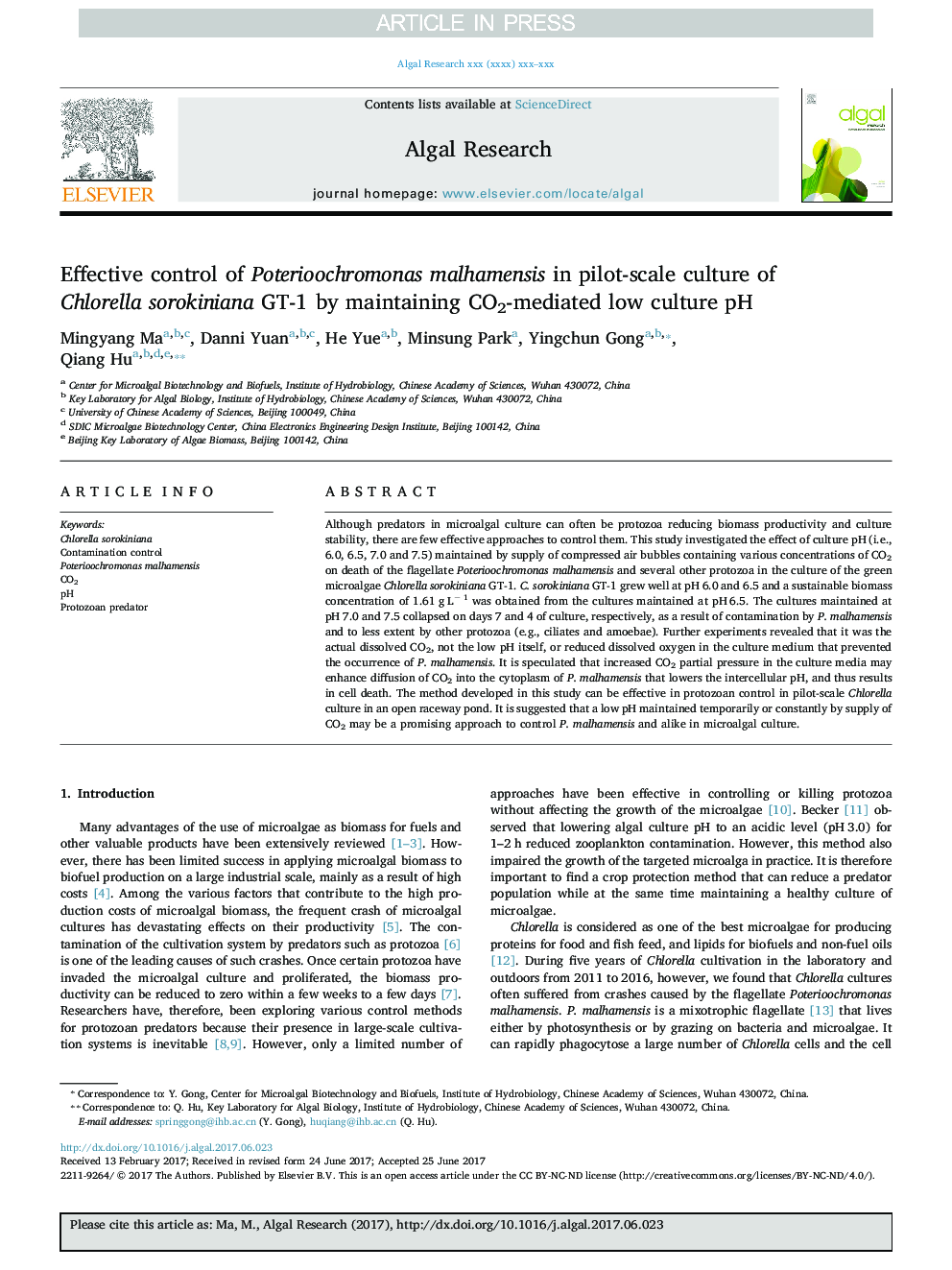| Article ID | Journal | Published Year | Pages | File Type |
|---|---|---|---|---|
| 5478312 | Algal Research | 2017 | 9 Pages |
Abstract
Although predators in microalgal culture can often be protozoa reducing biomass productivity and culture stability, there are few effective approaches to control them. This study investigated the effect of culture pH (i.e., 6.0, 6.5, 7.0 and 7.5) maintained by supply of compressed air bubbles containing various concentrations of CO2 on death of the flagellate Poterioochromonas malhamensis and several other protozoa in the culture of the green microalgae Chlorella sorokiniana GT-1. C. sorokiniana GT-1 grew well at pH 6.0 and 6.5 and a sustainable biomass concentration of 1.61 g Lâ 1 was obtained from the cultures maintained at pH 6.5. The cultures maintained at pH 7.0 and 7.5 collapsed on days 7 and 4 of culture, respectively, as a result of contamination by P. malhamensis and to less extent by other protozoa (e.g., ciliates and amoebae). Further experiments revealed that it was the actual dissolved CO2, not the low pH itself, or reduced dissolved oxygen in the culture medium that prevented the occurrence of P. malhamensis. It is speculated that increased CO2 partial pressure in the culture media may enhance diffusion of CO2 into the cytoplasm of P. malhamensis that lowers the intercellular pH, and thus results in cell death. The method developed in this study can be effective in protozoan control in pilot-scale Chlorella culture in an open raceway pond. It is suggested that a low pH maintained temporarily or constantly by supply of CO2 may be a promising approach to control P. malhamensis and alike in microalgal culture.
Related Topics
Physical Sciences and Engineering
Energy
Renewable Energy, Sustainability and the Environment
Authors
Mingyang Ma, Danni Yuan, Yue He, Minsung Park, Yingchun Gong, Qiang Hu,
